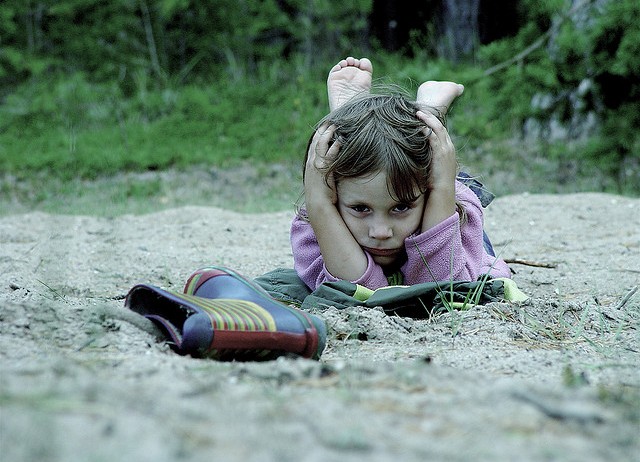
Image: Flickr user Mith Huang
Some children always seem to “make a mountain out of a molehill.” They are Chicken Littles who seem to think the sky is always falling. They tend to see the glass as half empty rather than half full. How can we help kids who lose control?
One way to help children who have this negative outlook on their world is to encourage them to recognize how their mindsets and thinking impact their emotional states. Recognizing the power of their thinking on how they feel about their world makes these children better-equipped to handle stress, anxiety, and new situations. In this edition of our Beyond Games series, we provide you with a set of strategies to help children recognize how thinking impacts feelings.
Emphasize the difference between “new” and “bad.” Some children are almost reflexively oppositional when something unexpected occurs. This is often the case for children who are rigid and are overly tied to routine. Help your child understand that unexpected situations can be fun and provide new opportunities. Describe previous situations in your family or in your own life when the unexpected has had great benefits. This can help them develop more self control, acceptance, and openness to new activities and change.
Model forgiveness. Display understanding when your child makes a mistake and briefly articulate why it is better to forgive than to remain angry. Describe ways he can correct what he has done and strategies for doing better next time. Keep in mind that the goal is to teach alternatives to angry outbursts and emotional dysregulation. Help him formulate a “script” he might use to express forgiveness to a sibling or friend who has made a mistake. Help him identify opportunities to practice forgiveness and praise any efforts he makes to do so.
[cjphs_content_placeholder id=”73597″ random=”no” ]Don’t sweat the small stuff. Make light of minor inconveniences and smoothly move past delays and disturbances that can readily cause stress. Imagine scenarios such as being behind a school bus when you are in a hurry or finally having time for the beach when the day suddenly turns cloudy. Point out to your child that while such circumstances can be stressful, moving past them is the key to regulating emotions and not getting mired in a bad attitude. Expressions such as, “Oh, well!” or “It’s not a big deal,” followed by a determination to move beyond a snare, enforce the idea of forward momentum. Engage in discussions with your child about how to move concerns from the “big stuff” category to the “small stuff” category.
Use home videos to illustrate your child’s growth. Watching videos with your child from when he was much younger may show him how much he has matured. This can also be an opportunity for you to engage him in a discussion about his past interests, behaviors, and verbalizations that he now likely considers “babyish.” Because the video is of a past him, it is a less threatening way to discuss the need for him to improve the regulation of his feelings.
Redefine and reframe. Talk about emotional regulation in simile and metaphor. Frame self-awareness in terms such as “feeling the temperature,” “adjusting the volume” on feelings, or “keeping his cool.” Help him create a feeling “thermometer” that helps him visualize when it is time to adjust the temperature on his feelings, moving from “hot-headed temper” to a more comfortable “cool down.” This kind of thinking gives your child new tools that could help him strategize new ways to regulate emotion. “Shedding a layer” (letting go of a particular concern or emotion) or “turning down the volume” (consciously choosing to reduce the importance of a situation) can lead to drastic reductions in disruptive outbursts. It can also help him recognize the amount of control he actually has in any situation. Deliberately focusing on areas of personal interest as a distraction — listening to his favorite music CD, walking his dog, or engaging in an enjoyable activity with a friend — can lessen the intensity of feelings. Teach him that he can’t change the weather, but he can choose to wear shorts instead of a wool sweater.
Check out our post on 5 Tips to Help Your Child Develop Self-Control Skills. You might also be interested to know what we recommend for apps and games that help develop self-control.
Featured image: Flickr user Rolands Lakis




